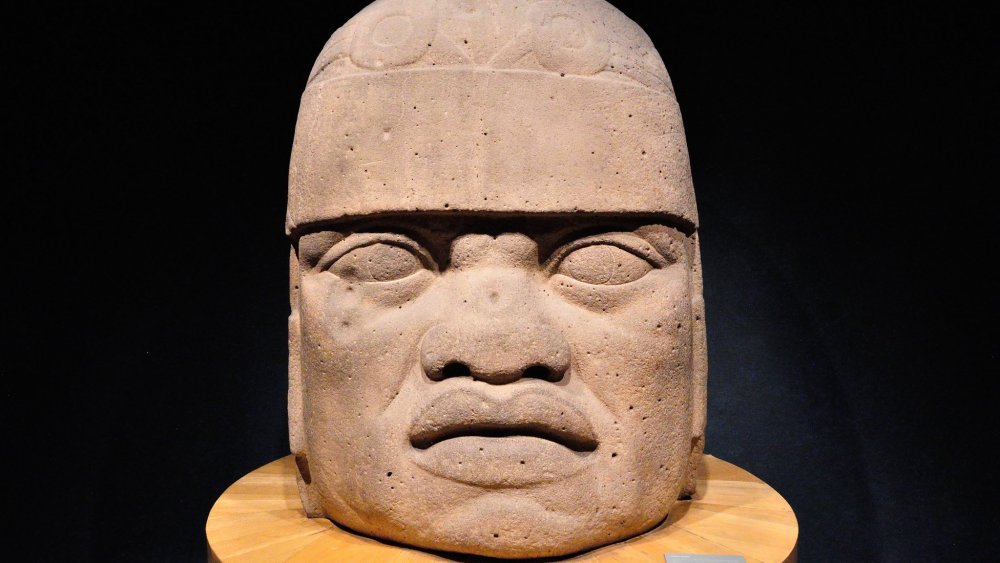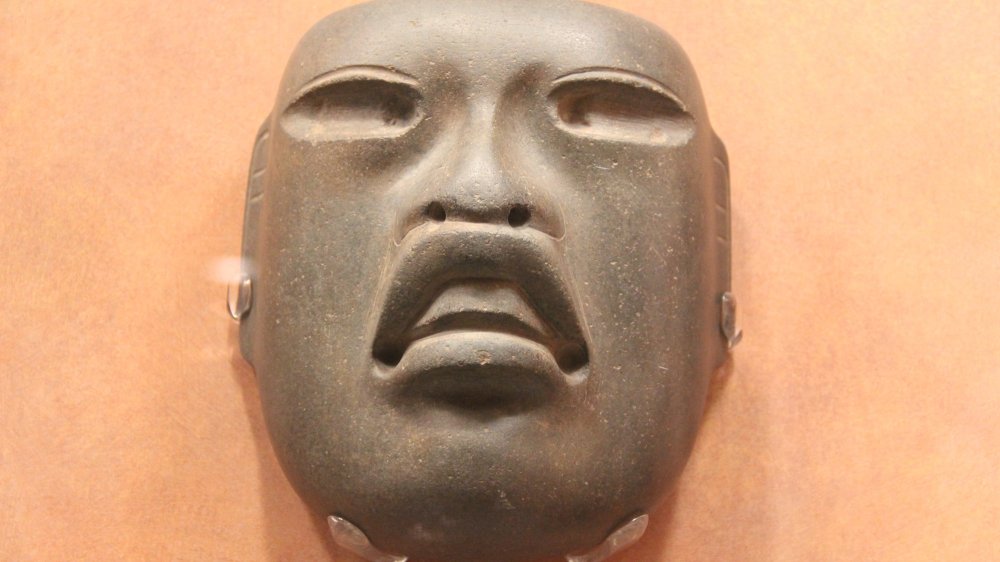What Happened To The Olmec Civilization?
The Olmecs are the lesser-known cousins to the Aztec and Maya, and predate them as the oldest Mesoamerican civilization on record. According to Thoughtco, from about 1775 BC to 400 BC, they built an empire that spanned from modern day Veracruz to Tabasco in Mexico, had four main cities full of plazas and surrounded by farms, a rich religious and political life full of shamans, kings, bloodletting, infant sacrifice, and a national sports game played with a rubber ball. In fact, the name "Olmec" is an Aztec word that means "rubber people," as described by Khan Academy, implying that the Olmec may have been among the first to figure out to harden and shape latex from rubber trees. The Olmec's 17 giant head sculptures are their most well-known archaeological artifact: 40-ton heads, each one of a specific person, composed of basalt transported from fifty miles away.
The Olmec are among a few civilizations, such as the Sumerians, regarded as "pristine," meaning that they arose independently with little external cultural or economic influence. They did, however, go on to trade heavily with surrounding regions, and in this way their culture spread. In exchange for goods such as cacao and crocodile skins, they passed along finely crafted artwork of signature Olmec style, that often incorporated highly stylized human faces. Their religion caught on, as well, with the most widespread deity becoming Quetzalcoatl, the feathered serpent.
By 400 BC, though, the Olmec civilization was all but abandoned. No one knows precisely what happened.
Downfall of the ciivization
One of the biggest clues we have regarding the downfall of the Olmec is their sculptures: La Venta, where much of their art was produced, started re-using old stone from previous sculptures. This implies that trade routes were blocked, or perhaps nearby groups had grown hostile, creating a crisis. As of 400 BC, the city was mostly abandoned, no new pottery or sculptures were created, no new goods were imported or exported, and the height of the Olmec civilization had passed.
Over-farming and agricultural troubles could have contributed to the demise of the Olmec, as well. The Olmec had been relying on a diet of beans, squash, corn, and various protein sources since at least 5000 BC. Even though they had a robust and well-established history of farming, they had also grown dependent on a very specific set of crops. It's possible that some natural disaster or shift in weather patterns could have disrupted their fine agricultural balance to an unrecoverable extent.
After the height of the Olmec civilization diminished, the descendants of the faded empire still lived on in an era referred to as Epi-Olmec, as per Thoughtco. Over the next 500 years, they migrated north toward a city dubbed Tres Zapatos, carrying on the tradition of their forebears while continuing to develop their writing and awareness of astronomy. Today, even though the Olmec themselves are long gone, their impact on the world, as one of the six original cradles of civilization, remains intact.

